A small ball of mass 100 g starts at the point A with a speed 2m/s and moves along frictionless track as shown in Fig. 4.4.40.
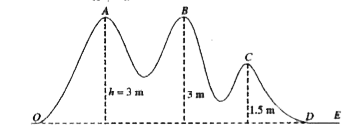
Suppose there was friction along the path DE, then calculate the distance travelled by the ball before conting to rest (Coeff. of friction = 0.2).
m=100g=0.1kg,h=3m
Velocity at A=u=2m/s
Velocity of the ball when it reaches the point D is vD
12mv2D= Total energy at A=3.14
vD=√2×3.14m=√2×3.140.1=7.92m/s
Let the distance through which the ball travels from B to the stopping point be s.
v2=u2+2as
In this case, u=vD=7.92m/s,a=−μg,s=?,v=0
0=u2−2μgs
s=u22μg=7.9222×0.2×9.8=16m.
Topper's Solved these Questions
- DYNAMICSBOOK - ICSECHAPTER - DYNAMICSEXERCISE - CONCEPTUAL SHORT ANSWER QUESTIONS WITH ANSWERS
20 Videos
- DYNAMICSBOOK - ICSECHAPTER - DYNAMICSEXERCISE - SHORT ANSWER QUESTIONS
93 Videos
- DYNAMICSBOOK - ICSECHAPTER - DYNAMICSEXERCISE - SHORT ANSWER QUESTIONS WITH ANSWERS
12 Videos
- DIMENSIONSBOOK - ICSECHAPTER - DIMENSIONSEXERCISE - SELECTED PROBLEMS (FROM CONVERSIONS OF ONE SYSTEMS OF UNITS INTO ANOTHER)
9 Videos
- FRICTIONBOOK - ICSECHAPTER - FRICTIONEXERCISE - Selected problems
30 Videos
Similar Questions
Starting from rest a wooden block moves with a velocity of 25ms−1 along a rough ground and comes to rest. Calculate the distance travelled by the wooden block on the rough surface of coefficient of friction 0.25.
View SolutionA small block of mass m slides along a smooth frictional track as shown in the figure. If it starts from rest at P, what is the resultant force acting on it at Q?
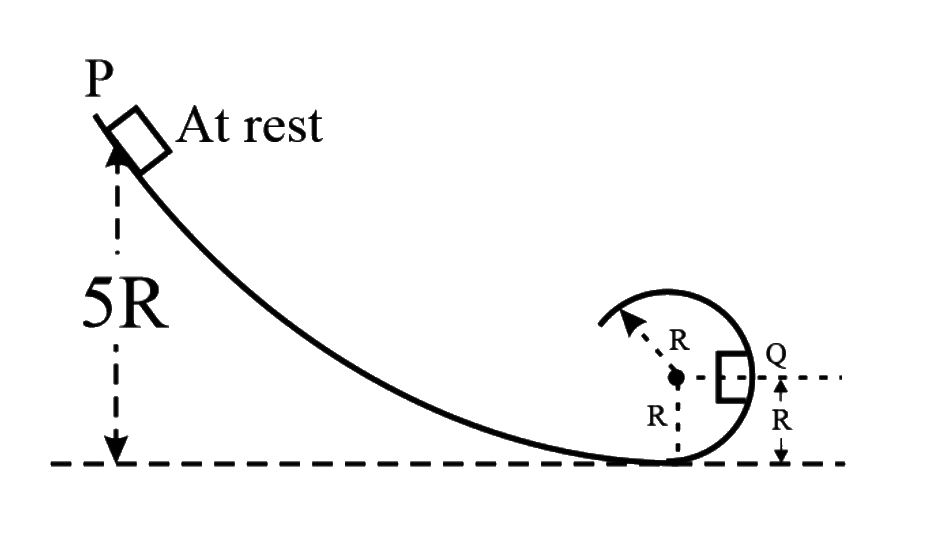
View Solution
Knowledge Check
A 1000 kg car starts from rest at point 1 and moves without friction down the track as shown in the figure. At point 2, the radius od curvature of the track is 6m.
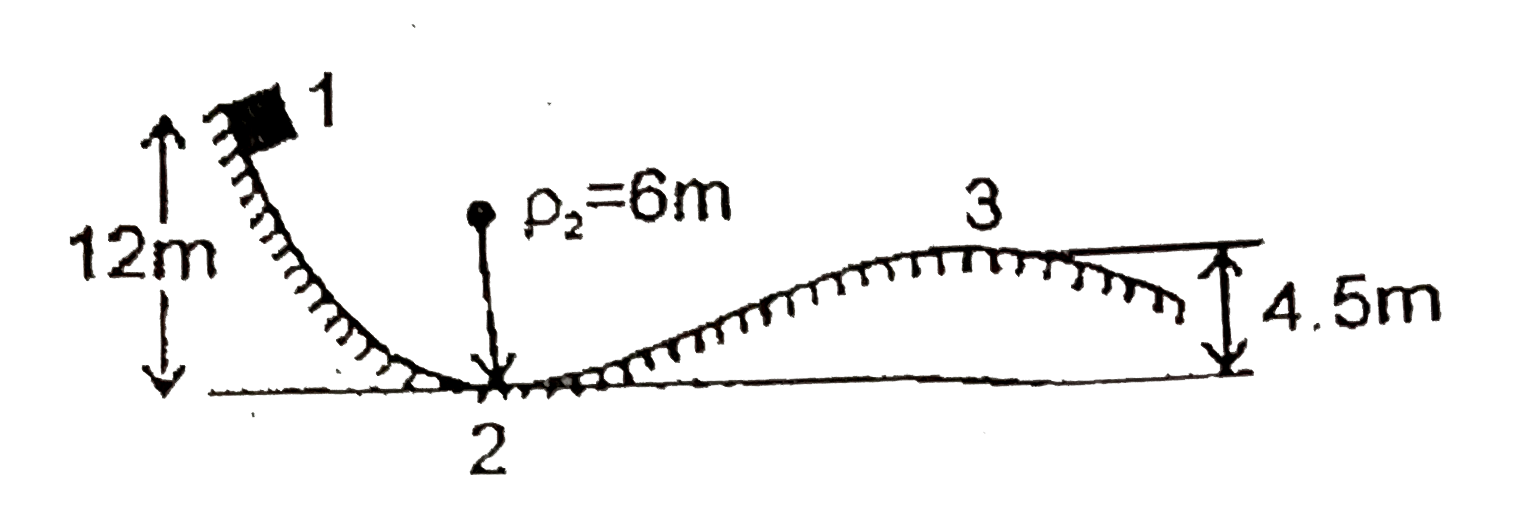 Athe force exerted by the track on the car at point 2 is 4000 kg wtBthe force exerted by the track on the car at point 2 is 5000 kg wtCthe minimum safe value of the radius of curvature at point 3 is 15 mDthe minium safe value of the radius of curvature at point 3 is 10 m
Athe force exerted by the track on the car at point 2 is 4000 kg wtBthe force exerted by the track on the car at point 2 is 5000 kg wtCthe minimum safe value of the radius of curvature at point 3 is 15 mDthe minium safe value of the radius of curvature at point 3 is 10 mA ball of mass 1kg is thrown up with an initial speed of 4m/s. A second ball of mass 2kg is released from rest from some height as shown in Fig. Choose the correct statement (s).
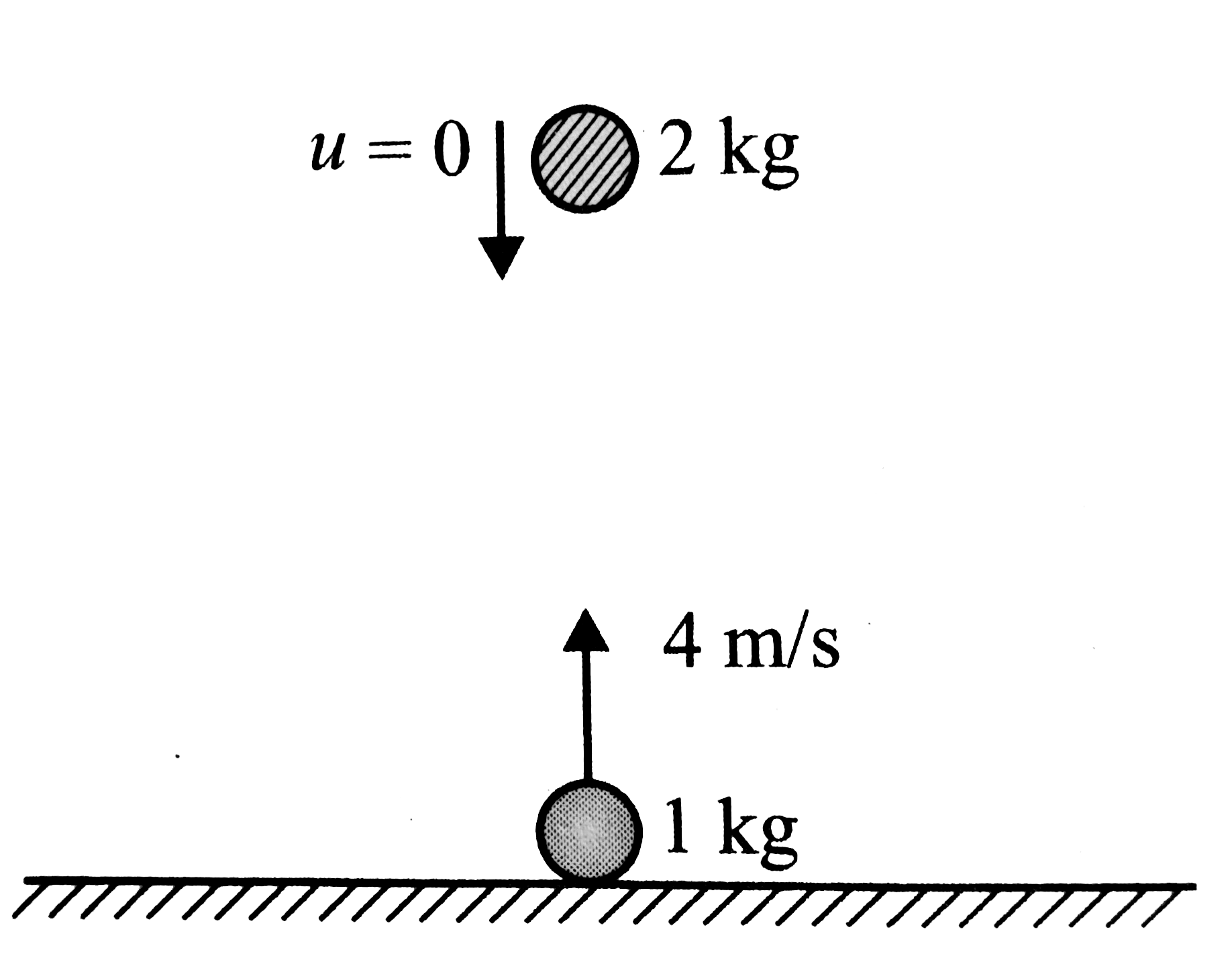 AThe centre of mass of the two balls comes down with acceleration g/3.BThe centre of mass first moves up and then comes down.CThe acceleration of the centre of mass is g downwards.DThe centre of mass of the two balls remains stationary.
AThe centre of mass of the two balls comes down with acceleration g/3.BThe centre of mass first moves up and then comes down.CThe acceleration of the centre of mass is g downwards.DThe centre of mass of the two balls remains stationary.A small of mass m starts from rest at the position shown and slides along the frictionless loop the loop track of radius R. What is the smallest value of y such that the object will slide without losing contact with the track?
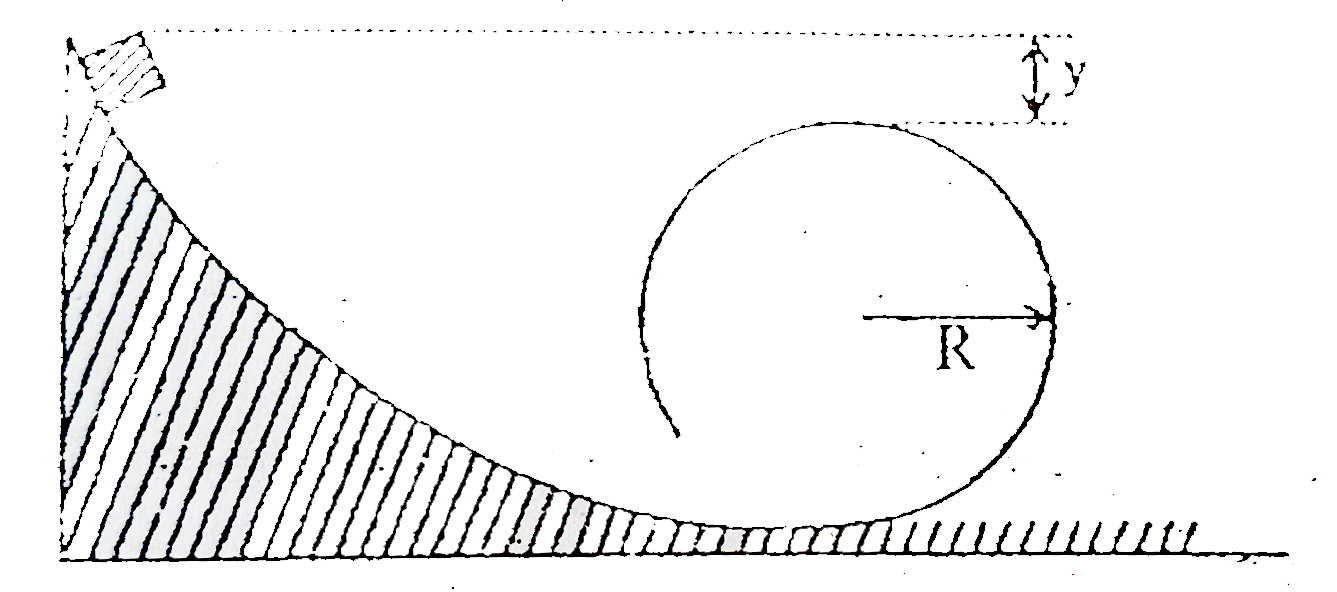 AR/2BRCR/4D3R/4
AR/2BRCR/4D3R/4
A small block of mass m slides along a smooth frictional track as shown in the figure. If it starts from rest at P, what is the resultant force acting on it at Q?

View SolutionA small ball of mass m=1 g is placed at the bottom of a watch glass of radius R=1 m. It is displaced by h=1 cm along the glass surface and released. Calculate the total distance deseribed by it before it comes to rest at the bottom, if μ=0.1 is the coefficient of friction between the ball and the watch glass.
View SolutionA small ball of mass m=1 g is placed at the bottom of a watch glass of radius R=1 m. It is displaced by h=1 cm along the glass surface and released. Calculate the total distance deseribed by it before it comes to rest at the bottom, if μ=0.1 is the coefficient of friction between the ball and the watch glass.
View SolutionA ball of mass 1kg is thrown up with an initial speed of 4m/s. A second ball of mass 2kg is released from rest from some height as shown in Fig. Choose the correct statement (s).

View SolutionA small of mass m starts from rest at the position shown and slides along the frictionless loop the loop track of radius R. What is the smallest value of y such that the object will slide without losing contact with the track?

View Solution
